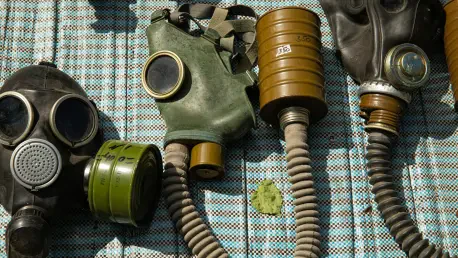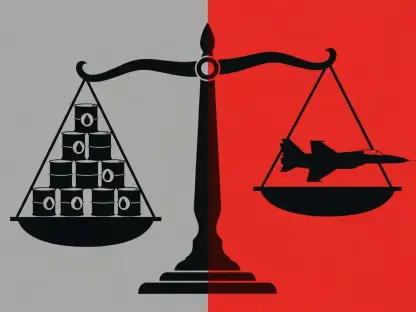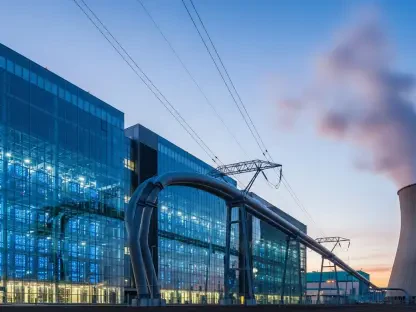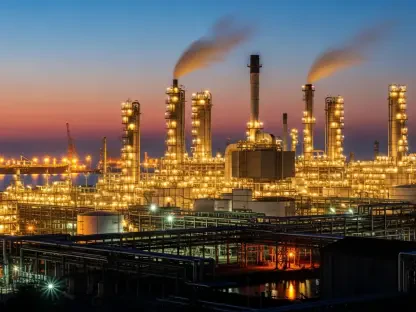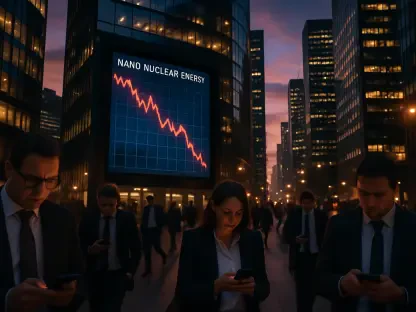What happens when the largest nuclear power plant in Europe, nestled in a war zone, loses all external power for over a week? In southern Ukraine, the Zaporizhzhia Nuclear Power Plant stands as a stark reminder of the fragility of critical infrastructure amid conflict, with emergency diesel generators as the only barrier against a potential meltdown. The stakes couldn’t be higher. This isn’t just a local problem—it’s a global concern, echoing the haunting memory of Chernobyl, a mere 300 miles away. The world watches, holding its breath, as this facility teeters on the brink of disaster.
A Global Stake in a Local Crisis
The significance of the situation at Zaporizhzhia cannot be overstated. As Europe’s largest nuclear facility, its stability is paramount to preventing a catastrophe that could send shockwaves across continents. Under Russian control since 2022, the plant has become a flashpoint in the ongoing conflict, with its loss of external power highlighting the vulnerability of such sites during wartime. A failure here could release radioactive material, impacting not just Ukraine but neighboring countries and beyond, making this a story of international urgency.
The risks tied to this power crisis are not abstract. They carry the weight of history, with the specter of the 1986 Chernobyl disaster serving as a grim benchmark. The current reliance on backup generators, while temporarily effective, is a precarious solution that cannot hold indefinitely. This narrative of danger and uncertainty demands attention, as the outcome will shape how nuclear safety is approached in conflict zones for years to come.
The Heart of the Power Struggle
At the core of the crisis lies a technical breakdown exacerbated by war. On September 23, the last external power line, known as the Dneprovskaya line, was severed, leaving Zaporizhzhia without a stable energy source. Russian authorities, who manage the plant, attribute the damage to Ukrainian shelling, marking this as the longest power outage in the conflict’s duration since 2022. With all six reactors shut down, the facility now depends entirely on diesel generators to cool reactors and spent fuel—a stopgap measure under immense pressure.
The implications of this power loss are dire. Without electricity to pump cooling water, the risk of overheating and a potential meltdown looms large. The proximity to active combat zones only amplifies the danger, as any stray shell or deliberate attack could further destabilize the situation. This blend of technical failure and military threat creates a uniquely volatile scenario, one that tests the limits of emergency preparedness in unimaginable ways.
Beyond the immediate risks, the human element adds another layer of complexity. Workers at the plant, operating under Russian management, face extraordinary stress as they maintain generator functionality amidst ongoing hostilities. Their efforts, though heroic, are constrained by the lack of safe access to repair critical infrastructure, illustrating how war transforms routine maintenance into a life-or-death challenge.
Warnings from the Frontlines
Voices from across the spectrum underscore the gravity of the situation. Rafael Grossi, Director General of the International Atomic Energy Agency (IAEA), has described the prolonged power outage as “deeply worrying,” noting that a failure of the diesel generators could trigger a catastrophic event. His neutral stance contrasts sharply with the charged rhetoric surrounding accountability, yet his warnings carry undeniable weight, urging immediate action to avert disaster.
On the ground, Russian-installed management at Zaporizhzhia maintains that the situation remains under control, citing adequate diesel reserves to keep systems running. However, even they acknowledge the pressing need to restore the external power line, a task complicated by ongoing conflict. Their assurances, while intended to calm fears, are overshadowed by the inherent fragility of relying on temporary fixes in such a high-stakes environment.
Conflicting narratives further muddy the waters. Russian officials point to Ukrainian shelling as the root cause of both the initial damage and delays in repairs, while Ukrainian authorities counter that Russian military actions are the true obstacle. This blame game, set against the backdrop of Grossi’s stark assessments, reveals a troubling reality: geopolitical tensions are hindering the cooperation needed to ensure nuclear safety, leaving the plant caught in a dangerous deadlock.
Caught in the Crossfire: Risks and Realities
The tangible risks at Zaporizhzhia paint a chilling picture. Although radiation levels are currently reported as normal by both Russian authorities and the IAEA, the prolonged absence of external power raises serious concerns about long-term stability. The diesel generators, while functional for now, are not designed for indefinite use, and any mechanical failure could disrupt the cooling process, edging the plant closer to a meltdown scenario reminiscent of past nuclear tragedies.
Compounding the issue is the plant’s location in an active war zone. The constant threat of shelling or other military actions increases the likelihood of accidental damage to critical systems. Unlike typical nuclear facilities operating in peacetime, Zaporizhzhia faces unique challenges where even minor disruptions can escalate rapidly into major crises, a fact that keeps safety experts on edge.
Historical parallels add urgency to these concerns. The Chernobyl disaster, just 300 miles away, serves as a somber reminder of what’s at stake if cooling systems fail. While the reactors at Zaporizhzhia are currently shut down and cooler than during full operation, the potential for a similar outcome remains a haunting possibility, driving home the need for swift resolution amid the chaos of conflict.
Pathways to Safety in a War-Torn Landscape
Navigating this crisis demands innovative and pragmatic solutions, even as war complicates every step. A critical first move involves securing a temporary ceasefire in the area to enable repair teams to safely access and restore the Dneprovskaya power line. Such a truce, though difficult to negotiate, could provide the breathing room needed to stabilize the plant’s power supply and reduce immediate risks.
International intervention offers another avenue for progress. The IAEA and other global bodies must intensify efforts to establish a demilitarized zone around Zaporizhzhia, shielding it from further military threats. Additionally, ensuring a consistent supply of fuel for the diesel generators, coupled with rigorous maintenance schedules, can bolster the plant’s resilience against unforeseen failures while long-term solutions are pursued.
Transparent dialogue, facilitated by neutral mediators, also holds potential to break the current stalemate. By fostering communication between conflicting parties, disputes over repair access and responsibility can be addressed without further endangering the facility. These measures, though challenging in a wartime context, form a practical blueprint for safeguarding Zaporizhzhia, balancing urgent operational needs with the overarching goal of nuclear safety.
Looking back, the crisis at Zaporizhzhia Nuclear Power Plant stood as a stark warning of the dangers posed by conflict near critical infrastructure. The reliance on emergency generators, while a temporary lifeline, exposed the fragility of such systems under duress. Moving forward, the international community needed to prioritize the protection of nuclear sites through enforceable agreements and demilitarized zones. Collaborative efforts to restore power and ensure uninterrupted safety measures became imperative, as did learning from this episode to fortify global protocols against similar threats. The path ahead required sustained commitment to prevent history from repeating itself in even more devastating ways.
